Restorative Yoga for Boaters
Not all exercise routines make you more tired. You can reduce fatigue from paddling and the daily grind with these yoga techniques from Andria Davis.
Last summer, I was working weekdays as a kayak instructor and weekends as a raft guide. I was so busy that all I had time for besides working and driving to work was sleeping. However, with all of the long drives, physical labor, and stressful days, my body was in need of some yoga! I started doing this quick and totally relaxing yoga routine, and it made all the difference.
Sometimes, as paddlers and active people, we are doing so many physical activities that the last thing we need is a physically demanding yoga routine. That’s where restorative yoga fits in. Restorative yoga is just what the name suggests: yoga poses that are meant to replenish you rather than demand more from you. You do easy poses without pushing the body, hold them for long periods, and often use support to allow the body to fully release. A restorative practice is good if you’ve been really busy, stressed out, physically active, sick, or injured. The poses are designed to release tension and promote circulation.
For even more benefit, practice sense-withdrawal. As you do each pose, concentrate on relaxing each and every part of your body and feeling your breath move through your whole body. Become absorbed in what you are doing and feeling, instead of letting anything distract you. Unless something is an emergency, just let it be and deal with it later. You will learn to become less reactive, and you’ll begin to understand that many things we think need our attention actually don’t. This is a good practice for paddlers because it teaches you to save your attention and energy for the times when it’s necessary.
If you have a back injury or back pain, please see your doctor before doing these exercises—they can exacerbate disc problems. In general, move slowly into and out of a pose and always move in a pain-free range of motion. If you experience pain, back out of a pose until you don’t feel pain.
Child’s Pose
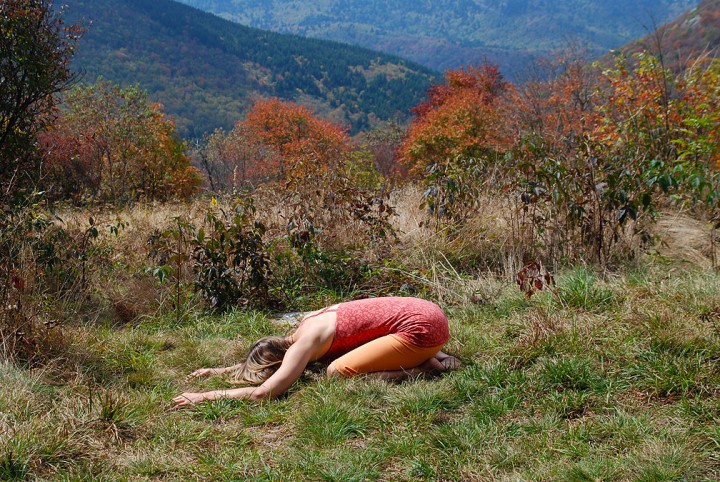
From all fours, bring your feet together and move your butt down to your feet and place your forehead on the ground. You can have your knees together or apart. You can have your arms stretched overhead or down by your sides. Release your shoulder blades and let them spread apart. Let your hips be heavy. Breathe fully. If you have pain or discomfort, place some pillows or blankets under your torso for support.
Cat/Cow Pose

On all fours, as you inhale, lift your head and your butt up as you let your belly drop. Keep your abs somewhat engaged so that you don’t over-do it in your low back. As you exhale, drop your head and butt, rounding your back. Repeat as often as you like.

Half Downward Facing Dog Pose
This is a restorative version of the well-known Downward Facing Dog Pose. If you’ve been paddling a lot, the last thing you want to do is put more stress on your shoulders by putting weight on them.
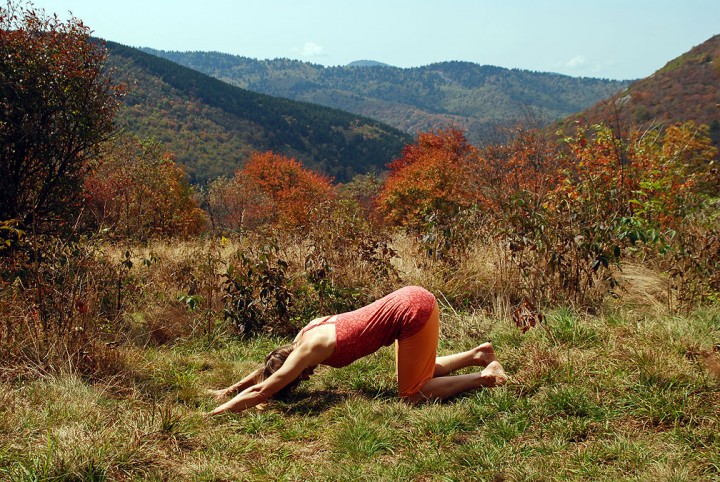
From all fours, scoot your knees back as far as you can. As you exhale, bring your hips back toward your feet without moving your hands. Make sure to stay within a pain free range of motion for your body. Breathe deeply in the pose for as long as you like.
Staff Pose and Forward Bend
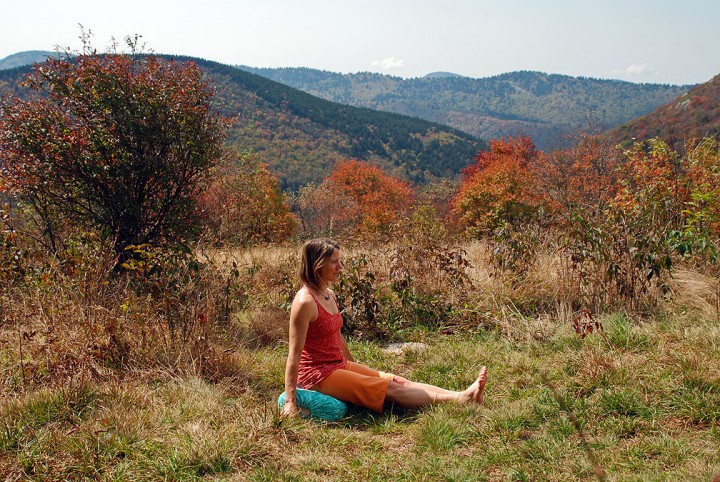
Sit with your legs straight out in front of you and your toes facing straight up. If your hips are tight, sit up on some support, such as a bolster or firm pillow. Place your hands on your hips, exhale, and fold forward. As you fold forward, feel your hips moving with you. Only go as far as your hips will go. Take a few breaths and inhale as you come back up.
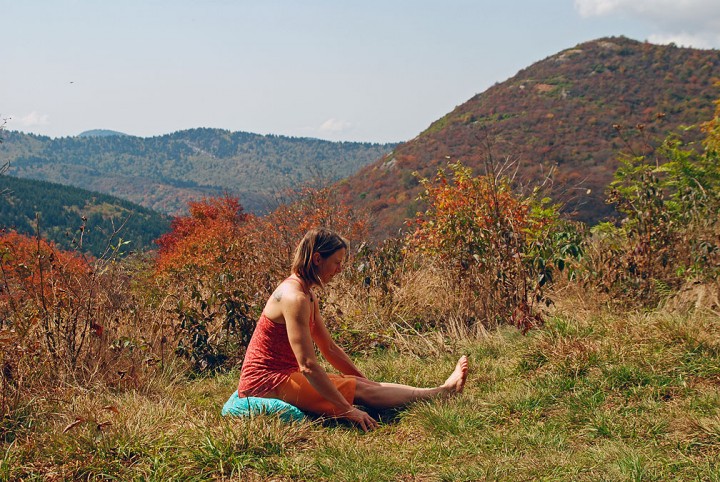
Seated Twist

Bend one knee and place the foot on the inside of the other leg; or, for more hip stretch, take the foot all the way across to the outside of the other leg. (If this makes your back round, you might want to skip this pose. Twisting with a rounded back is extremely stressful on your discs.) As you exhale, turn your torso toward your bent leg. Only twist as far as your rib cage and shoulder girdle will go without forcing anything more. Keep your arms in line with your shoulder girdle. Gently turn your head to look in the direction of the twist. Take a few deep breaths and slowly untwist. When you’ve done both sides, straighten your legs back into Staff Pose.
Bound Angle Pose
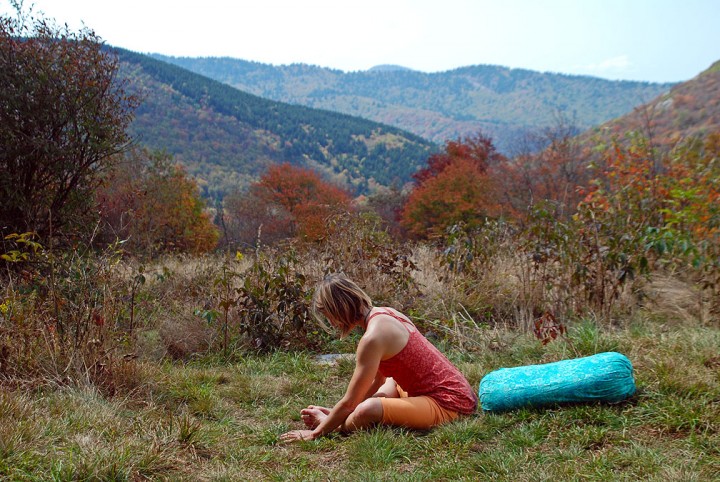
Bend your knees and bring the bottoms of your feet together. If there is pain in your knees, put support under them. Sit tall and take some deep breaths. Slowly bend forward making sure that your pelvis moves, as demonstrated in the seated forward bend above. Stay as long as you want, taking deep breaths. Come up on an inhalation.
Reclining Bound Angle Pose

Place some support behind you like a bolster, blankets, or firm pillows. Lie back on them so that you are comfortable. I like my support placed pretty close to my sacrum (low back). Allow your arms to drape open out to the sides with your palms up. Completely release, breathe deeply and stay in the pose as long as you’d like, enjoying the release in your groins and chest.
Supported Bridge Pose
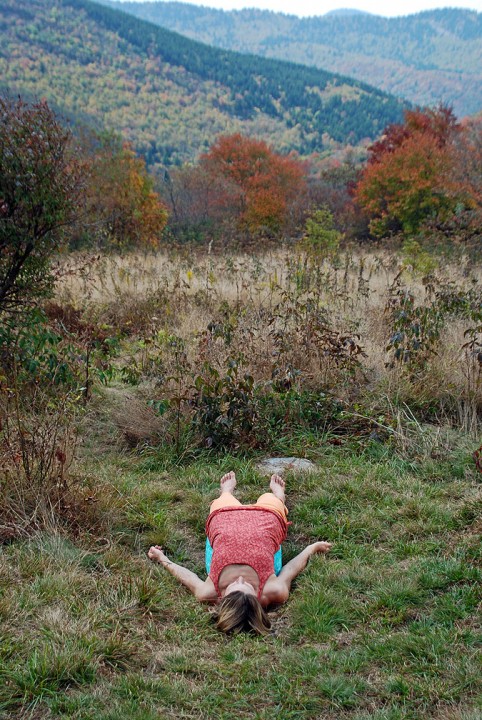
This is another pose that will allow your body to release the muscles that are constantly working when you’re paddling. This pose gently bends your spine backwards while stretching the hip flexors, abdominals, and chest muscles. Lie on the bolster, blankets, or pillows so that your head and shoulder blades are on the floor/ground and your hips are supported. Have your arms by your sides, palms up. Straighten your legs if you can, but bend your knees if you find that straightening your legs causes your back to arch or provokes any pain. Stay here as long as you want, breathing deeply. Be mindful of your body as you come out of the pose.
Reclining Twist
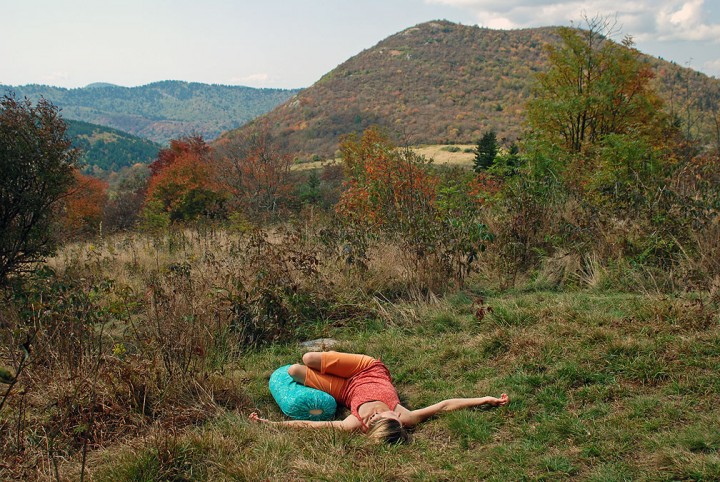
Lie supine with your knees bent. Bring your feet off the ground until your legs form a right angle with your torso. On an exhalation, slowly take your legs to one side. Take them all the way to the ground or place a support under your legs. Stay here and take some deep breaths. On an inhalation bring your legs up and exhale to the other side. Come up on an inhalation and exhale your legs down to the floor and straighten them.
End your yoga session lying supine in a comfortable position. Close your eyes and breathe deeply, resting for about 3–5 minutes.
Enjoy!